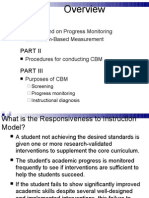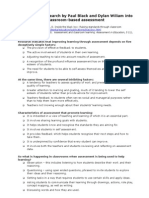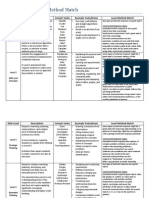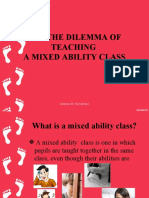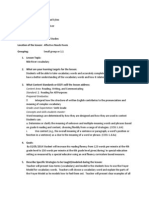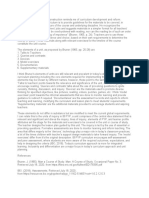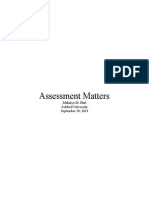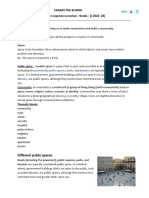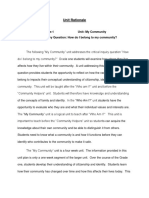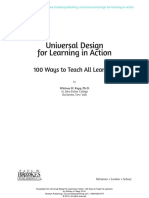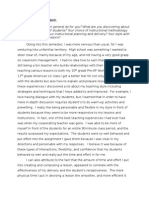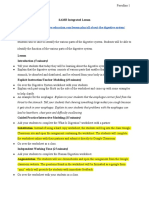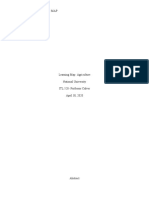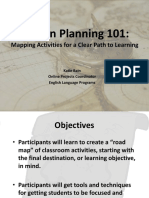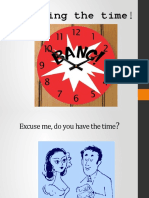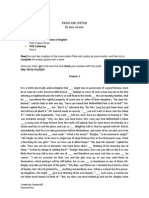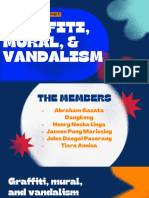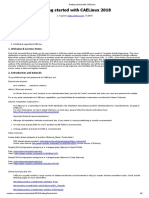Lesson
Planning
101:
Mapping
Ac3vi3es
for
a
Clear
Path
to
Learning
Ka3e
Bain
Online
Projects
Coordinator
English
Language
Programs
�Objec3ves
Par3cipants
will
learn
to
create
a
road
map
of
classroom
ac3vi3es,
star3ng
with
the
nal
des3na3on,
or
learning
objec3ve,
in
mind.
Par3cipants
will
get
tools
and
techniques
for
geJng
students
to
be
focused
and
mo3vated!
�Have
your
students
ever
looked
like
this?
*All
images
for
the
presenta2on
retrieved
from
www.pixabay.com.
�Or
have
you
ever
felt
like
this
as
a
teacher?
�Then
you
may
be
suering
from
a
lack
of
good
lesson
planning!
�Agree
or
Disagree
�Agree/Disagree
I
write
a
lesson
plan
for
my
class
every
single
day.
�Agree/Disagree
Our
students
suer
when
we
fail
to
appropriately
plan
for
them.
(Dabbs,
2012,
para.
6)
�Agree/Disagree
Nothing
ever
goes
according
to
my
plan,
so
I
dont
write
lesson
plans.
�Agree/Disagree
Lesson
planning
is
less
important
than
my
other
responsibili3es,
like
grading.
�Agree/Disagree
I
know
how
to
write
an
organized
and
eec3ve
lesson
plan!
�Brainstorm
What
is
the
purpose
of
a
lesson
plan?
�Workshop
Outline
1. Background:
What
do
you
need
to
know/consider
when
crea2ng
a
lesson
plan?
2. Components:
What
are
the
essen2al
parts
of
a
lesson
plan?
3. Objec3ves:
Wri2ng
clear
objec2ves
for
you
and
your
students.
4. Assessment:
How
do
you
assess
your
students
on
the
lesson
objec2ve?
5. Sequencing
Ac3vi3es
-
How
do
you
put
learning
ac2vi2es
in
logical
order
for
students
to
succeed?
6. Reec3on:
How
do
you
know
if
your
lesson
was
good?
How
do
you
make
plans
to
improve
your
teaching?
�Background
Know
your
Students!
Know
your
Content!
Know
your
Resources!
(Suo,
Yan
2013)
�Know
Your
Students
Ability
levels
Backgrounds
Interests
Culture
and
subculture
Educa2on
level
Typical
educa2on
style
Extra-curricular
or
home
responsibili2es
(Suo,
Yan
2013)
�Know
Your
Content
Curriculum
Textbook
Grammar
Vocabulary
Subject
Material
Wri2ng
Conven2ons
Reading
Strategies
(Suo,
Yan
2013)
�Recognize
the
Forest
and
the
Trees
The
Broad
Perspec3ve
The
Narrow
Perspec3ve
�Forest
Level
Resources
Na2onal
Curriculum
School
Curriculum
Textbook
Resources
Colleagues
�Know
Your
Materials/Resources
(Suo,
Yan
2013)
�Components
of
a
Lesson
Plan
General
Informa2on
Objec2ve(s)
Materials/Resources
Procedure
Assessment
���General
Informa3on
Date
Class
Student
Level
Unit
Title
Lesson
Title
Dura2on
of
Class
�Objec2ve*
Determine
what
you
want
the
students
to
be
know
and
be
able
to
do
by
the
end
of
the
lesson.
Make
it
measurable
and
specic.
Dont
keep
it
a
secret!
Always
tell
your
students
what
the
goal
of
the
lesson
is.
*More
on
this
later!
�Materials
Make
sure
you
an2cipate
what
materials
you
and
your
students
will
need.
Make
sure
to
organize
and
prepare
all
of
those
materials
before
class.
�Procedure*
Write
the
steps
that
you
and
your
students
will
follow,
keeping
your
objec2ve
in
mind
all
along
the
way.
Write
down
the
2ming
you
an2cipate
for
each
ac2vity.
*More
on
this
later,
too!
�Assessment*
How
will
you
know
that
students
have
achieved
the
objec3ve?
*Well
come
back
to
this
topic
a
liale
later!
�What
is
the
most
important
part
of
a
lesson
plan?
�Ka2es
Opinion:
B:
Objec2ve
AND
E:
Assessment
�Objec3ves
�Why
should
we
write
objec2ves?
To
create
an
end
point
or
des2na2on
for
learning!
�Objec3ves
Who
are
objec3ves
for?
�Evalua2ng
Goals
and
Objec2ves
�Which
goal
is
clearer?
Number
1
A:
What
will
your
life
be
like
in
ve
years?
Number
2
A:
What
will
your
life
be
like
in
ve
years?
B:
I
will
be
rich!
B:
I
will
have
worked
at
this
company
for
ve
years
and
will
have
bought
a
car.
�Which
goal
is
more
measurable?
Number
1
A:
What
are
your
tness
goals?
B:
I
will
lose
10
kilos
in
four
months
by
exercising
every
day
and
ea3ng
healthy
foods.
Number
2
A:
What
are
your
tness
goals?
B:
I
will
lose
a
lot
of
weight
and
have
great
muscles!
�Which
goal
is
more
ahainable?
Number
1
A:
What
is
your
running
plan
as
a
brand
new
runner?
Number
2
A:
What
is
your
running
plan
as
a
brand
new
runner?
B:
I
am
going
to
run
a
marathon
next
week!
B:
I
am
going
to
train
to
run
5
kilometers
within
3
months.
�Keep
Those
Ques2ons
in
Mind
When
Wri2ng
Objec2ves
�How
do
we
know
if
an
objec2ve
is
eec2ve?
Is
it
clear?
Is
it
measurable?
Is
it
ahainable?
�Example
Objec3ve
#1
Students
will
be
able
to
use
the
present
perfect
tense
by
playing
a
game
called
two
truths
and
a
lie.
(wri%ng
and
saying
3
sentences
in
the
present
perfect
tense).
Is
it
clear?
Is
it
measurable?
Is
it
ahainable?
�Example
Objec3ve
#2
Students
will
prac:ce
new
vocabulary
about
the
classroom.
Is
it
clear?
Is
it
measurable?
Is
it
ahainable?
�Example
Objec3ve
#3
Students
will
write
paragraphs
about
what
they
did
on
their
summer
vaca:on.
Is
it
clear?
Is
it
measurable?
Is
it
ahainable?
�Example
Objec3ve
#4
Students
will
show
understanding
of
past
tense
verbs
by
wri:ng
and
saying
three
past
tense
verbs
in
a
dialogue.
Is
it
clear?
Is
it
measurable?
Is
it
ahainable?
�Example
Objec3ve
#5
Students
will
demonstrate
eec:ve
wri:ng
skills
by
wri:ng
a
compare/
contrast
essay
with
an
introduc:on,
body,
and
conclusion.
Is
it
clear?
Is
it
measurable?
Is
it
ahainable?
�Now
Its
Your
Turn!
Choose
a
topic
on
the
next
slide
and
write
an
objec3ve.
�Objec3ve
Topics
Classroom
Vocabulary
Cultural
Celebra2ons
Grammar
Past
Tense
Grammar
-
/BE/
verb
Wri2ng
an
essay
Reading
comprehension
Animals
Food
Holidays
�On
your
marks,
get
set,
WRITE!
�Assessment!
Assessment
happens
throughout
the
lesson
and
at
the
end.
(Dabbs,
2012,
para.
15)
�Have
you
used
any
of
these
assessments
at
the
end
of
a
lesson?
�The
Exit
Slip
Basically,
an
exit
slip
is
a
piece
of
paper
where
a
student
writes
an
answer
to
a
ques2on
or
prompt
from
the
teacher.
The
prompt
is
related
to
the
lesson
objec2ve.
(Marzano,
2012)
�Many
Ways
to
Use
an
Exit
Slip
Sample
Prompts:
1. Write
one
new
word
you
learned
today
and
draw
a
picture
of
it.
2. Do
you
agree
or
disagree
with
this
statement?
3. What
was
one
dierence
between
the
two
ar2cles
we
read
in
class?
�Rubrics
A
rubric
is
a
tool
for
grading
assignments
based
on
criteria.
�
Rubric
Title:
Paragraph:
Summer
Vaca3on
Category
Topic
Sentence
Excellent
3
Sa3sfactory
2
Unsa3sfactory
1
Clearly
states
the
main
States
the
main
idea
but
Topic
sentence
is
very
idea
and
captures
readers
aaen2on.
does
not
capture
readers
aaen2on.
Most
sentences
are
relevant
unclear
and
does
not
state
the
main
idea.
Suppor3ng
All
sentences
are
relevant
to
to
the
topic
sentence
and
Most
sentences
are
irrelevant
to
the
topic
or
do
not
add
detail.
Concluding
Sentence
Brings
closure
to
the
but
not
in
an
interes2ng
way.
Concluding
sentence
is
missing
or
does
not
restate
main
idea.
2-3
new
vocabulary
words
used
correctly
0-1
new
vocabulary
words
are
used.
Sentences
Vocabulary
the
topic
sentence
and
add
interes2ng
details.
paragraph
and
restates
the
main
idea.
4-5
new
vocabulary
words
used
correctly
some
add
interes2ng
details.
Restates
the
main
idea
Grammar
Two
or
fewer
minor
errors
in
grammar.
3-5
errors
in
grammar.
Many
grammar
errors
that
hinder
meaning.
Punctua3on
No
errors
in
punctua2on
or
capitaliza2on
1-2
errors
in
punctua2on
or
capitaliza2on
Many
punctua2on
errors
that
hinder
meaning.
Total
Points
�Paragraph
Summary
Rubric
Criteria
Points
Received
Exceeds
Expecta3ons
3
Meets
Expecta3ons
2
Does
not
meet
Expecta3ons
0-1
Topic
Sentence
Clear
topic
sentence
that
iden3es
the
En3re
summary
is
clear,
concise,
and
logically
ordered
Any
minor
errors
do
not
hinder
meaning.
Suppor3ng
Details
Clarity/
Cohesiveness
Grammar/
Mechanics
Total
Points
Comments
main
point
Relevant
and
accurate
suppor3ng
details
�Rubric
Resources
Rubistar
hap://rubistar.4teachers.org/index.php
Rubrics4Teachers
hap://www.rubrics4teachers.com/
Edutopia
Ar3cle
on
Rubrics
hap://www.edutopia.org/assessment-guide-
rubrics
�Guidelines
for
Using
Rubrics
1. Keep
the
exact
objec2ve(s)
in
mind
that
you
are
assessing.
2. Be
as
specic
or
general
as
you
need
to
be.
3. Share
the
rubric
with
students
before
they
begin
working
on
the
task.
4. Evaluate
students
according
to
the
rubric.
5. Refer
to
the
rubric
when
students
have
ques2ons
about
their
scores.
�Do
you
have
other
ways
to
assess?
�Ordering
Ac3vi3es
Filling
In
the
Missing
Pieces
�Terms
for
Sequencing
a
Lesson
Plan
Scaolding
Gradual
Release
of
Responsibility
Guiding
the
student
from
Dependence
to
Independence
�Ways
of
Ordering
a
Lesson
Hunters
7
Steps
I
Do,
We
Do,
You
Do
�Madeline
Hunters
7-Step
Lesson
1.
2.
3.
4.
5.
6.
7.
An2cipatory
Set
(Warm-Up)
Objec2ve/Purpose
Instruc2onal
Input
Modeling
Checking
for
Understanding
Guided
Prac2ce
Independent
Prac2ce
Lesson
Plan
Model:
Madeline
Hunter's
Seven
Step
Lesson
Plan.
(n.d.).
Retrieved
January
7,
2015,
from
hap://yasuo.mysite.syr.edu/Document/Lesson
Plan/4.Lesson
Plan
Model
-
Madeline
Hunter's
Seven
Step
Lesson
Plan.pdf
�I
Do,
We
Do,
You
Do
Teacher
models
the
skill
Students
work
in
pairs
or
groups
on
the
skill
with
teacher
feedback
Students
complete
the
ac2vity
on
their
own
(rubric
is
used
to
assess).
Gradual
Release
of
Responsibility:
I
Do,
We
Do,
You
Do.
(n.d.).
Retrieved
January
7,
2015,
from
hap://
www.sjboces.org/doc/Gioed/GradualReleaseResponsibilityJan08.pdf
�Lets
Try
Logical
Ordering!
Objec3ve:
Students
will
be
able
to
write
a
logically
ordered
paragraph
about
a
recently
celebrated
holiday.
(Topic
Sentence,
Suppor2ng
Sentences,
Concluding
Sentences)
�Lesson
Order
Warm-up:
Students
brainstorm
what
they
did
during
a
recent
holiday
or
celebra2on.
1. Teacher
presents
a
good
paragraph
and
points
out
how
it
is
organized.
2. Students
work
in
groups
to
order
sentence
strips
correctly
as
a
logical
paragraph.
3. Students
use
brainstormed
ideas
to
write
a
paragraph
of
their
own.
�Now
You
Try!
Objec2ve:
Students
will
be
able
to
use
ve
simple
past
tense
verbs
in
short
presenta2ons
to
describe
their
weekends.
�Put
These
In
Order
Warm-up:
Students
will
draw
a
picture
of
something
they
did
over
the
weekend.
2
a. Students
work
in
pairs
to
change
present
tense
verbs
to
past
tense
verbs
within
a
paragraph.
4
b. Students
write
and
then
present
their
paragraphs.
1
c. Teacher
shows
an
example
of
her
own
picture
and
explains
her
weekend,
emphasizing
past
tense
verbs.
3
d. Students
work
in
pairs
to
brainstorm
a
list
of
ac3vi3es
that
they
did
over
the
weekend
using
past
tense
verbs.
�Logical
Ordering
is
Important!
�Reec2ng
on
Your
Lesson
How
do
you
know
that
your
lesson
was
good?
�Reec2on
Journaling
Taking
Notes
Discussing
with
colleagues
Asking
your
students
Analyzing
assessments
�Reec2on
Ques2ons
1. What
went
well?
2. What
did
not
go
well?
3. How
did
my
students
respond?
4. How
did
my
students
do
on
the
assessment?
5. What
would
I
have
done
dierently?
6. What
will
I
do
tomorrow?
7. How
can
I
improve?
�What
do
you
do
to
reect
on
your
lessons?
�Other
Lesson
Planning
Considera3ons
1.
2.
3.
4.
5.
Warm-up
/
Mo2va2on
Transi2ons
Keeping
em
ac2ve
Logical
Sequencing
Teacher
talk
/
Student
talk
�Your
Exit
Slip!
What
are
the
most
important
components
of
a
lesson
plan
and
why?
How
will
your
lesson
planning
change
or
be
aected
by
what
we
discussed
today?
�THANK
YOU!
�Sources
All
images
retrieved
from
www.pixabay.com.
Alber,
R.
(2012,
November
12).
A
Favorite
Forma2ve
Assessment:
The
Exit
Slip.
Retrieved
January
5,
2015,
from
hap://www.edutopia.org/blog/forma2ve-assessment-exit-slip-
rebecca-alber
BSCS
5E
Instruc2onal
Model.
(n.d.).
Retrieved
January
7,
2015,
from
hap://bscs.org/bscs-5e-
instruc2onal-model
Dabbs,
L.
(2012,
January
24).
New
Teacher
Academy:
Lesson
Planning.
Retrieved
December
15,
2014,
from
hap://www.edutopia.org/blog/new-teacher-lesson-planning-lisa-dabbs
Gagnes
9
Events
of
Instruc2on.
(n.d.).
Retrieved
January
7,
2015,
from
hap://cia.u.edu/
tools/gagnes-9-events-of-instruc2on/
Gradual
Release
of
Responsibility:
I
Do,
We
Do,
You
Do.
(n.d.).
Retrieved
January
7,
2015,
from
hap://www.sjboces.org/doc/Gioed/GradualReleaseResponsibilityJan08.pdf
Jenkins,
R.,
&
Joh,
S.
(2011,
January
1).
The
Essen2als
of
Good
Lesson
Planning.
Retrieved
December
15,
2014,
from
haps://eslteacherdotnet.les.wordpress.com/2011/07/
lp_essen2als.pdf
Jenkins,
R.,
&
Johnson,
S.
(n.d.).
Implemen2ng
Solid
Lesson
Plans.
Retrieved
December
15,
2014,
from
haps://eslteacherdotnet.les.wordpress.com/2011/07/implemen2ng-solid-
lessons.pdf
�Sources
Jensen,
L.
(n.d.).
Planning
Lessons.
Retrieved
December
15,
2014,
from
hap://
www.princeton.edu/~pia/TEFL.pdf
Lesson
Plan
Model:
Madeline
Hunter's
Seven
Step
Lesson
Plan.
(n.d.).
Retrieved
January
7,
2015,
from
hap://yasuo.mysite.syr.edu/Document/Lesson
Plan/4.Lesson
Plan
Model
-
Madeline
Hunter's
Seven
Step
Lesson
Plan.pdf
Lesson
Planning.
(n.d.).
Retrieved
December
15,
2014,
from
hap://www.cal.org/
caela/tools/program_development/elltoolkit/Part2-29LessonPlanning.pdf
Marzano,
R.
(2012,
October).
Membership.
Retrieved
January
5,
2015,
from
hap://www.ascd.org/
publica2ons/educa2onal-leadership/oct12/vol70/num02/The-Many-Uses-of-Exit-Slips.aspx
Mikova,
S.
(n.d.).
Strategies
for
Eec2ve
Lesson
Planning.
Retrieved
December
15,
2014,
from
hap://www.crlt.umich.edu/gsis/p2_5
Ross,
J.
(2007).
Designing
Lessons
for
EFL
Listening
Comprehension
Classes.
English
Teaching
Forum,
45(3),
30-33.
Retrieved
December
15,
2014,
from
hap://
americanenglish.state.gov/les/ae/resource_les/07-45-3-f.pdf
Suo,
Yan.
"How
to
Make
a
Lesson
Plan."
Slideshare.
N.p..
Web.
25
Sep
2013.
<hap://
www.slideshare.net/yseauy/lesson-plan-powerpoint-presenta2on>.





